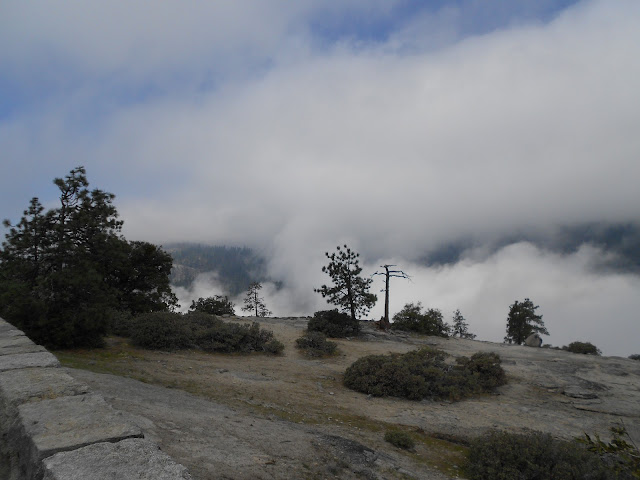Above: Some of the dazzling scenery down the South Kaibab Trail en route to the Tonto Trail.
All total it covers 14.1 miles and descends and climbs about 3,600 vertical feet.
It took me about 8 hours to hike the loop.
This is not an easy hike, it is very strenuous and I recommend only doing it in the spring, fall or winter.
And, whenever you do it, get an eary start in the morning.
For me and my son, Taylor, on May 20, 2012, we parked near the Bright Angel Lodge and then took the hiker express bus to the Kaibab trailhead.
So, when we finished, there was our car about 170 yards away.
You've got to carry ample water on this trip. In fact, of two mistakes we made on our hike, one was in not dumping our extra water over us to cool us down as we were halfway across the Tonto trail segment, where temperatures were into the mid 80s.
Our other mistake was that we failed to walk an extra hundred or so yards to look over the cliff and enjoy the view at the Tipoff. (So, we missed seeing Phantom Ranch and the suspension bridge.)
That second mistake was caused in part by our hurry to get away from a way too large hiking group of some 40 people together, who were making oodles of noise and disrupting our pleasant hiking experience. Fortunately, they on the Kaibab Trail only.
(There ought to be a law in National Park statute, that no groups of 12 or more people are allowed on such a trail! Sadly, there is such a directive in Zion National Park, but not the Grand Canyon.)
DO NOT hike the inner Grand Canyon on a weekend or holiday, unless you want to deal with bigger crowds of hikers.
Anyway, the pleasure of the Tonto trail is that it is wilderness. No signs, very narrow and super quiet. We only saw or met some 6 people on our two hour jaunt across that path. (Compare that to the hundreds of people we met on the other Grand Canyon trails.)
There are two water sources along the Tonto trail, if you purify the water. Otherwise, it is a very hot, pure desert kind of experience, with lots of cactus.
This segment of the Tonto trail is amazingly level and only has occassional ups and downs of any significance.
The Tonto trail is so long, because it has to go around the one big drainage that looms northwest from Cedar Ridge and O'Neill Butte.
I also recommend extra safety and caution along the Tonto Trail, because if you get into trouble there, a rescue could take hours longer than it would along the much more well traveled Kaibab and Bright Angel paths.
So, if you want a challenge and something different in the Grand Canyon, this might be it.
For me, after having done the inner canyon hikes on the south rim twice and once partially, plus the north rim to Ribbon Falls and back once, this was indeed a much different kind of hiking experience.
Also, with traffic on the Bright Angel and Kaibab trails now making them busy hiking freeways,the Tonto trail may offer the kind of solitude and true peace you are going to find in the inner Grand Canyon these days.
--It is one of those hikes I would probably never do again, but then that's because it is a grunt.
Also, it is kind of humorous to recall this one experience now, but as we crested a small ridge, we weren't sure where we were and we were tired and very hot. We spotted a sign that we thought said Indian Gardens 3 miles and intitally failed to spot the point on the .3 miles on the sign.
--I also have to complement the National Park Service. Somehow in recent years, they are covering or taking off a lot of the mule poop off the Bright Angel Trail regularly. This is a great improvement over my previous hikes there in 1984 and 1994.



.JPG)







